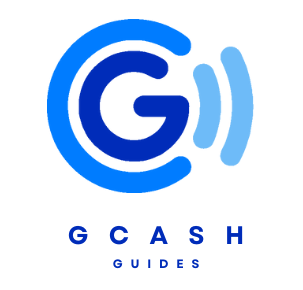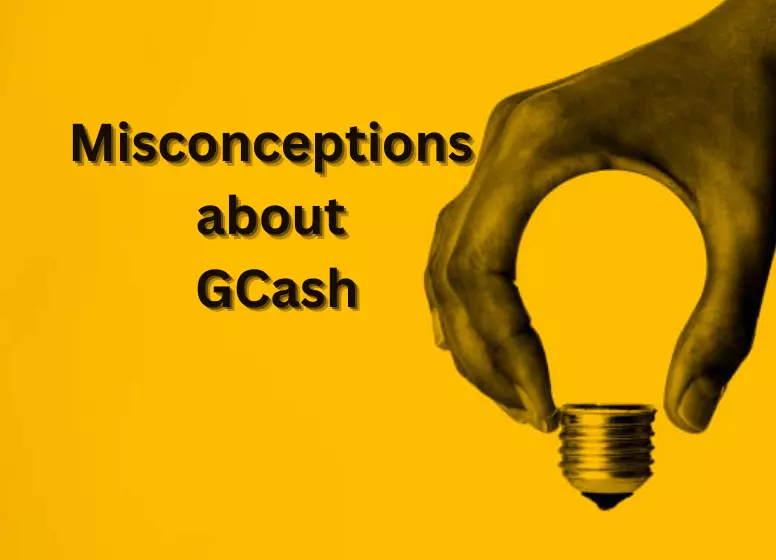GCash is often misunderstood and misinformed, so let’s clear things up.
There is no voice of reason against GCash; many people believe it simply because they have no alternative. I often read up on GCash-related Facebook groups, and sometimes I read something downright false about it.
Due to GCash’s poor support and assistance, many people have resigned to hearsay due to problems they may have encountered with the service.
There should be a better ending than this. Whenever we read something online that brings up our emotions, we should always question what we read. Fake news is fuelled by this.
This post is aimed at clarifying some misconceptions people have about GCash.
Misconception 1: GCash is a Bank
Most people don’t realize that GCash is not a bank. It is a mobile wallet and payment service that users can access via their smartphones. Even though it provides various financial services, it is not a traditional bank and does not offer banking services such as loans and savings accounts.
Misconception 2: GCash is Only for the Philippines
The Philippines is the only country in which GCash cannot be used. In addition to being used primarily in the Philippines, GCash has become popular internationally and has expanded its services.
Misconception 3: You Need a Smartphone to Use GCash
Although GCash services can be accessed without a smartphone, the GCash app is commonly used on smartphones. With a basic mobile phone, you can use GCash by sending text messages (SMS) or by calling USSD.
Misconception 4: GCash is Only for Online Shopping
One of the misconceptions about GCash is that it can only be used online. There are a number of ways to use GCash, including bill payments, money transfers, and in-store purchases.
Misconception 5: Referral Rewards are Too Small to Be Worth It
Referral rewards may be underestimated by some users. Referrals from friends and family can be quite rewarding with GCash’s referral program, which offers cash incentives and discounts.
Misconception 6: GCash is Only for the Tech-Savvy
In spite of the fact that GCash uses technology, it is designed to be user-friendly and accessible to people of all backgrounds, including those who may not have a lot of technical knowledge.
Misconception 7: One of the most common Misconceptions about GCash is that GScore does whatever it wants.
The post about a user’s falling GScore is often seen in FB group threads because he notices that his scores are declining. In a fit of frustration, he declares that the company controls GScore in order to force people to behave in a certain way.
To begin with, you have two options:
- There is no need to worry about it. In any case, when your GScore drops, your GCredit amount stays the same.
- GCredit gives you the option of trying to raise it so that you are able to borrow a larger amount.
Gscore is actually determined by a machine-learning algorithm that combines rules-based logic. In order to prevent tampering, the rules aren’t shared with the public. Due to the lack of transparency surrounding this algorithm, anyone may interpret the results however they like.
My post here can help you raise your individual scores if your scores are dwindling. My experience with GScore was based on my own. The following post summarizes all of the best practices I have learned. My GScore at the time of writing that post was 739. 750 is now the number. The price hasn’t dropped since then.
Misconception 8: Globe is the sole owner of GCash
The GCash idea originated within Globe, so there is some truth to this. It is a product that goes by the name of “GCash“. It started out as a Globe subsidiary but is now owned by G-Xchange, Inc. As the company grew, Globe formed a holding company called Mynt, Inc., to handle all of its fintech initiatives. In addition to Globe Telecom, Ayala Corporation also owns Mynt.
Besides handling loans for Mynt Inc., the company also handled digital wallets and payments through G-Xchange. An Alibaba-owned company, Ant Financial, bought 45% of the company in 2017. The result was that Ant Financial, Globe, and Ayala Corp. owned Mynt in three different ways. Another round of funding was held in 2021, in which Globe and Ant each had 35%, Bow Wave was next with 14%, and Ayala was next with 5%. Itai Tsiddon is the latest investor, along with the rest held by Amplo Ventures.
In addition to Alicloud and Alipay, Ant Financial also brought Alicloud with them.
Tencent and Ant Financial own Alipay and WeChatPay respectively, which rank as China’s two largest digital wallets.
The reason GCash has been experiencing so many technical issues since mid-late 2019 is also related to this. Due to a migration to the Alibaba platform, they are slow to respond. The existing system needs to be overhauled. Adding to that, currently employed employees need to be trained, and then existing data needs to be slowly migrated to the new platform while maintaining uptime and reliability.
It allowed GCash to quickly roll out innovative features like GScore, GCredit, GCash Forest, and Vouchers. There are already implementations of these technologies in China.
In addition to investing in Voyager Innovations, the operator of Paymaya and a subsidiary of Smart, Tencent made an investment in China Telecom earlier this year. Since they will also need to migrate their system, we may see similar problems as with GCash.
GCash wallets are not under Jack Ma’s control, despite what many people believe — that’s blatantly incorrect due to my next point.
Misconception 9: Employees of GCash steal money from users through “inside jobs”
Electronic Money Issuer (EMI) licenses are issued to GCash by the BSP, and users are protected by the AMLA (Anti Money Laundering Act of 2001). As a result, dirty money cannot circulate in our financial system (money derived from criminal activities).
As a result, each transaction should be tracked by any particular user (KYC or Know-Your-Customer). Due to this, GCash offers several levels of verification, which unlock features at varying levels. The law requires financial apps to include this in some form, so all apps (Paymaya, Coins.ph, Grabpay, etc.) include it.
As a result, the security of personal information is of paramount importance. This system is built around the concept that no one else should know your MPIN or OTP. Data breaches would result in a penalty for the employee, and he or she would most likely be charged as well. In addition to a stiff fine, G-Xchange would also face court action.
This problem may be exacerbated by scammers impersonating GCash employees. Their victims are taken advantage of by hacking into their social media accounts and stealing their money.
Therefore, it is imperative that you understand that your MPIN and OTP are the keys to your kingdom. There will never be a time when a GCash employee asks for these details.
Misconception 10: There is a misconception that GCash is prone to being hacked
A technical security feature is built into GCash. Every time we cash out or cash in, we have to enter an OTP or MPIN challenge. This chain is often weakest at the end where the user is concerned. It is this vulnerability that the “hackers” most commonly exploit. GCashCare clones are constantly attempting to get personal information and MPINs from Messenger users.
GCashCare in Facebook Messenger has already been decommissioned. A dedicated support website is now available (help.gcash.com). It is most likely that you will receive an FB message from GCashCare trying to trick you into sending your hard-earned money.
I recommend using the chatbot on the support site instead of calling 2882 if you find that it wastes your time. It is common for the chatbot to be backed by a live person who can answer questions and provide support. Furthermore, they offer their services 24 hours a day, seven days a week.
It is unfortunate that hackers sometimes succeed in gaining access to your funds. Customer Protect was also established by GCash for this reason. Getting your money back is as simple as filing an application as soon as you realize you’ve been scammed.
Misconception 11: GCash is unreliable and unsafe
Nevertheless, this statement holds some truth, just not in the manner you might expect. There are numerous service providers under GCash’s wing that it leverages and relies on to fulfill its objectives. Most of the time, it’s not the fault of GCash.
Globe Labs, for instance, provides SMSs. It is possible for important text messages to be delayed sometimes.
- ECPay is responsible for cash-ins at 7-11 Cliqq.
- Bayad Center processes Meralco bills.
- We accept debit cards through Paynamics.
- Instapay takes care of bank transfers through Bancnet using Instapay.
GCash is liable for failures or outages of these services, and its only recourse is to apologize to users. Each provider’s SLA (service level agreement) is the only thing GCash as an institution can follow up on.
This means that GCash can sometimes make mistakes, such as when GCredit is not dispensed, or when ATMs don’t dispense cash. The level of services provided by GCash is managed in these cases.
I’ve noticed that maintenance pages are being set up more proactive than they used to be. This is to prevent users from losing funds since preventing problems would always be better than resolving them when they occur. Moreover, more staff have been dedicated to dealing with system-wide issues as they arise.
Scale has been a factor in the reliability question. A transition has taken place between GCash and Alipay. Once this is accomplished, GCash will be able to handle a greater number of transactions thanks to the growing number of people using the app (80 million users by mid-2023).
There will be technical issues from time to time, and this is why there have been advisories lately. Changing any aspect of a company’s operations is certainly a big and delicate undertaking.
Users of GCash, on the other hand, generally have no problems using the app. Some bad news can really be magnified on social media, which has the unfortunate side effect of propagating some misinformation.
In conclusion, the GCash app continues to function as intended and is still safe to use.
Misconception 12: GCash pockets funds from blacklisted accounts
There is an effective freezing of blacklisted accounts. Because these accounts do not belong to GCash, they are unable to liquidate them. Money can’t be pocketed from these accounts by employees of GCash, since they will be liable for fraudulent activity.
What happened to those accounts for them to become blacklisted in the first place? The large sums of money going to a wallet, for example, might have caused it. Any suspicious transactions are automatically flagged for checking by GCash, which follows the Anti-Money Laundering Act (AMLA).
Summary
Some misconceptions about GCash have been discussed:
- It follows a set of rules and doesn’t think for itself. My post can help you increase your score if this bothers you.
- Only Ant Financial (Alipay) and Ayala own GCash, while Globe is only a part owner. The employees of Globe are not affiliated with Mynt – it is not a part of Globe.
- There is no way for Mynt employees to access MPINs, and even if they did, they would be prosecuted and GCash would probably cease to exist.
- Even the most sophisticated security system, such as GCash, cannot guarantee safety. GCash is rarely hacked by hackers; rather, it is people who are hacked. Information can be manipulated and misused by people who are gullible.
- It is true that GCash has some technical difficulties, but it mostly works as intended and is currently in widespread use.
- In a blacklisted account, the account has been frozen. Any amounts within these accounts cannot be pocketed by GCash since it would constitute fraud. GCash will be able to release your funds if you ask why you were blacklisted

